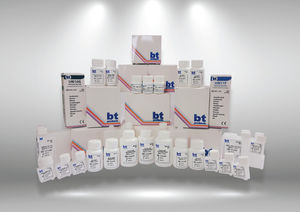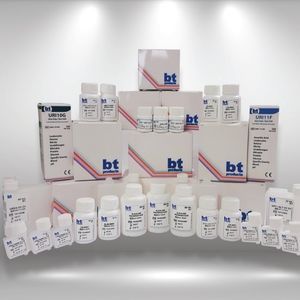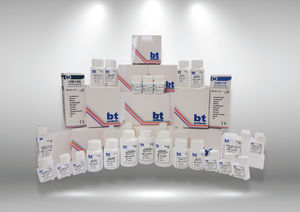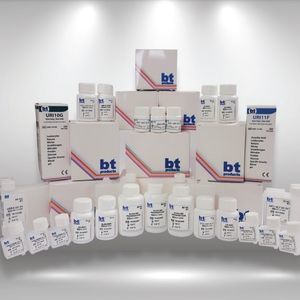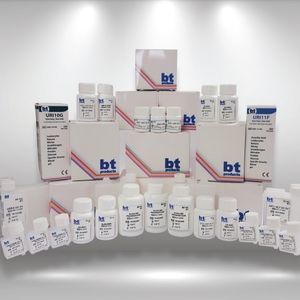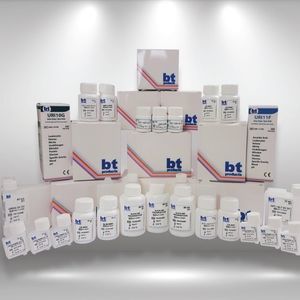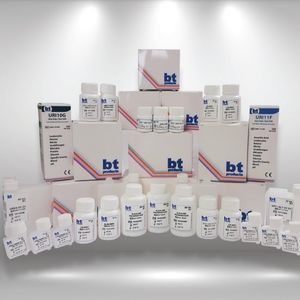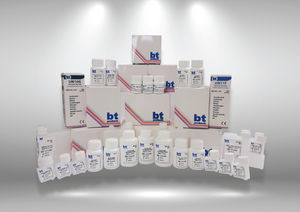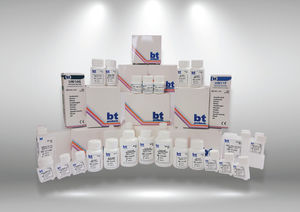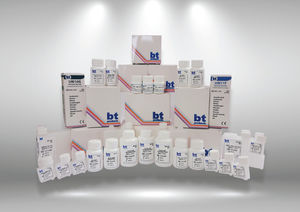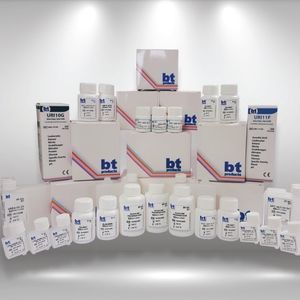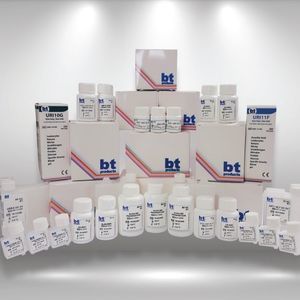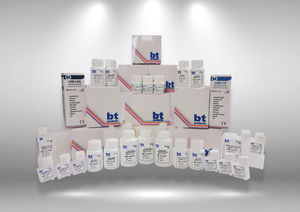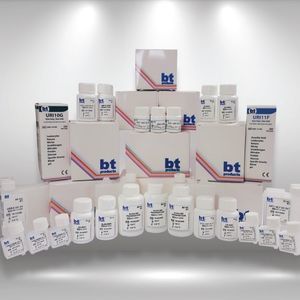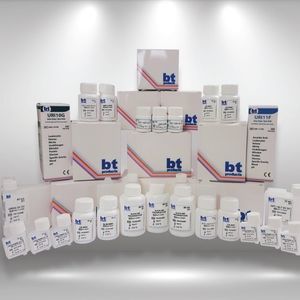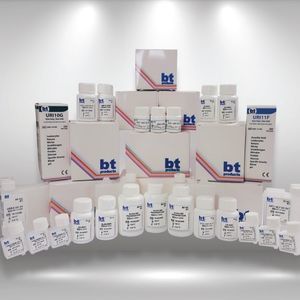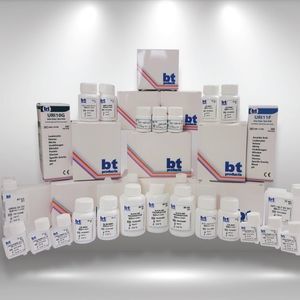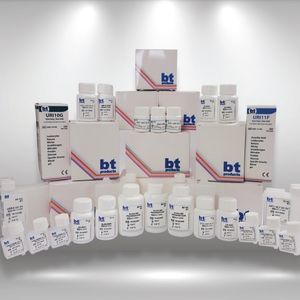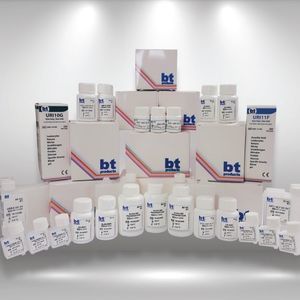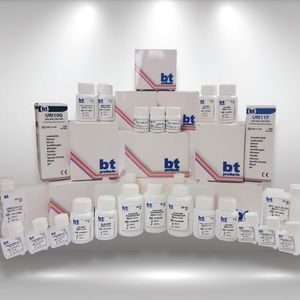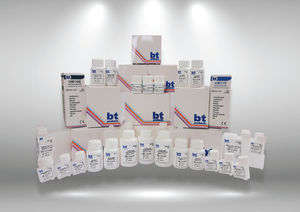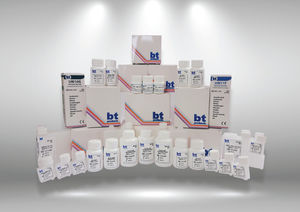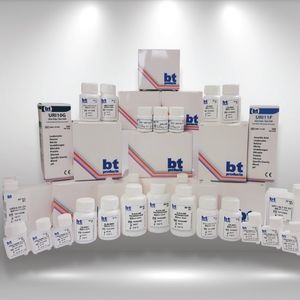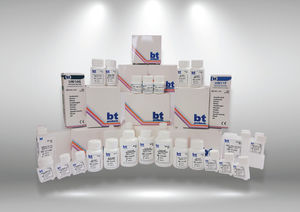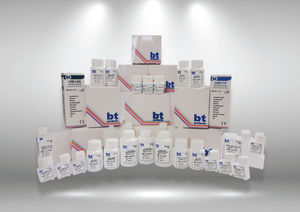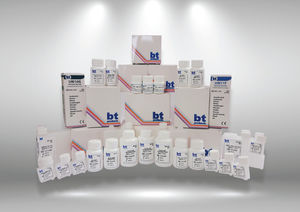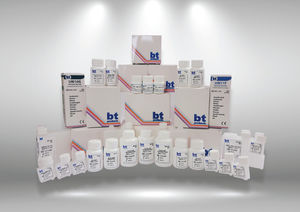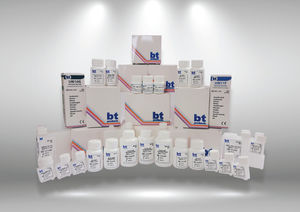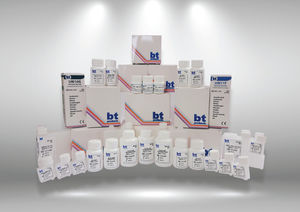
- Laboratory
- Laboratory medicine
- Enzyme reagent
- BILIMSEL TIBBI ÜRÜNLER
Lipase reagent kit LIP-20 seriessolutionenzymedye
Add to favorites
Compare this product
Characteristics
- Type
- solution, enzyme, dye
- Applications
- diagnostic, for biochemistry
- Tested parameter
- hemoglobin, lipase, glycerol, sodium, bilirubin
- Method
- chromogenic
- Storage temperature
Min.: 2 °C
(36 °F)Max.: 25 °C
(77 °F)
Description
For the quantitative determination of lipase in serum or plasma. For in vitro diagnostic use only.
METHOD HISTORY
This method is based on the cleavage of a specific chromogenic lipase substrate 1,2-O-dilauryl-rac-glycero-3-glutaric acid-(6-methylresorufin) ester emulsified with bile acids. The pancreatic enzyme activity is determined specifically by the combination of bile acid and colipase used in this assay. Virtually no lipase activity is detected in the absence of colipase. Colipase only activates pancreatic lipase, but not other lipolytic enzymes found in serum. The high amount of cholates ensure that the esterases present in the serum do not react with the chromogenic substrate due to the highly negative surface charge.
PRINCIPLE
At alkaline pH the lipase dye substrate 1,2-O-dilauryl-rac -glycero - 3 - glutaric acid - ( 6 -methyl - resorufin) esther is cleaved by the catalytic action of pancreatic lipase to form 1,2-O-dilauryl-rac-glycerol and unstable compound glutaric acid-(6-methyl-resorufin) – esther. In that alkaline solution,this compound degrades to glutaric acid and methylresorufin.The color intensity of the red dye formed is directly proportional to the lipase activity. This activity can be measured at 578 nm.
PRECAUTIONS
1. The reagents contain Sodium azide at 0.09%.
2. Handle with care. The disposal of the residues has to be made according to legal local regulations..
Concentrations of Hemoglobin higher than 400 mg/dL and of Bilirubin higher than 60 mg/dL can interfere with the assay. To perform this test, the use of disposable labware is highly recommended.
Catalogs
No catalogs are available for this product.
See all of BILIMSEL TIBBI ÜRÜNLER‘s catalogsOther BILIMSEL TIBBI ÜRÜNLER products
Universal Bottled Clinical Chemistry Reagents
Related Searches
- Solution reagent kit
- Protein reagent kit
- Diagnostic reagent kit
- Laboratory reagent kit
- Enzyme reagent kit
- Histology reagent kit
- Dye reagent
- Antibody
- Buffer solution reagent kit
- Clinical chemistry reagent
- Clinical chemistry analyzer
- Quality control reagent kit
- Clinical reagent kit
- Virus reagent kit
- Automatic clinical chemistry analyzer
- Benchtop clinical chemistry analyzer
- Test strip
- Tissue reagent kit
- Electrolyte reagent kit
- Colorimetric reagent kit
*Prices are pre-tax. They exclude delivery charges and customs duties and do not include additional charges for installation or activation options. Prices are indicative only and may vary by country, with changes to the cost of raw materials and exchange rates.



